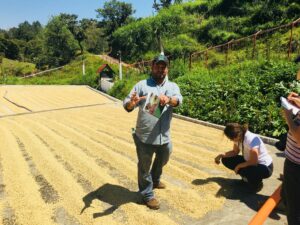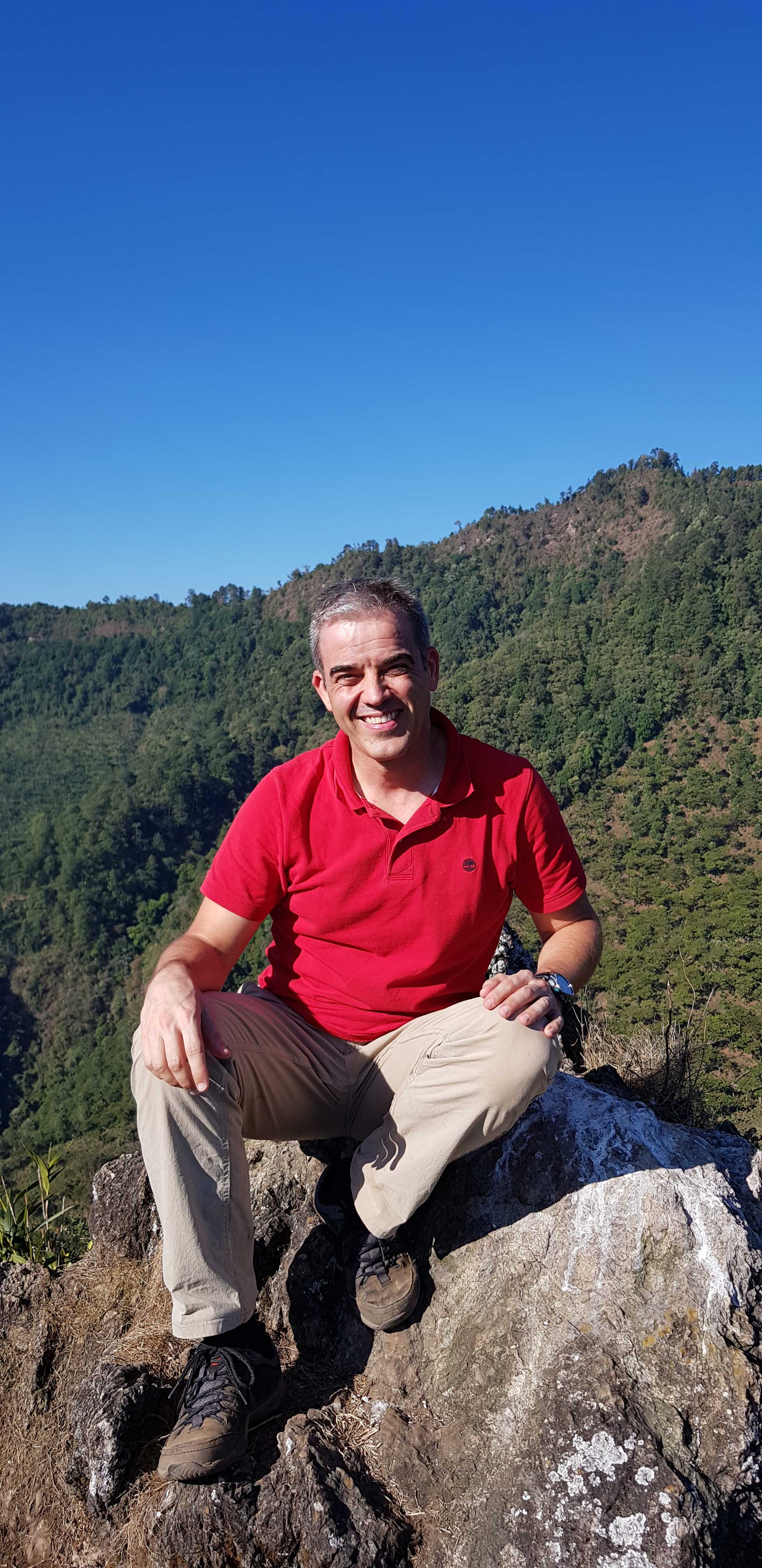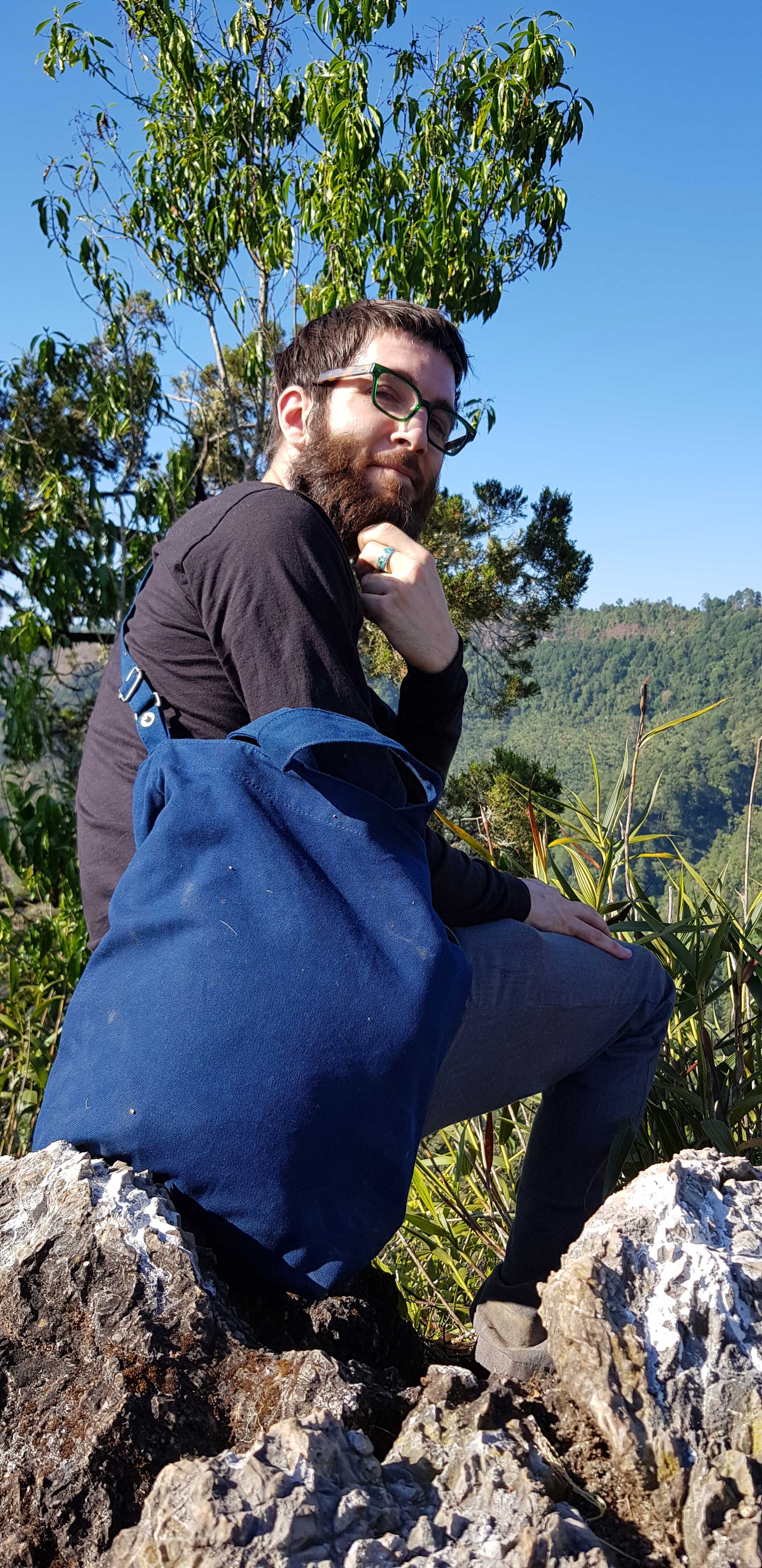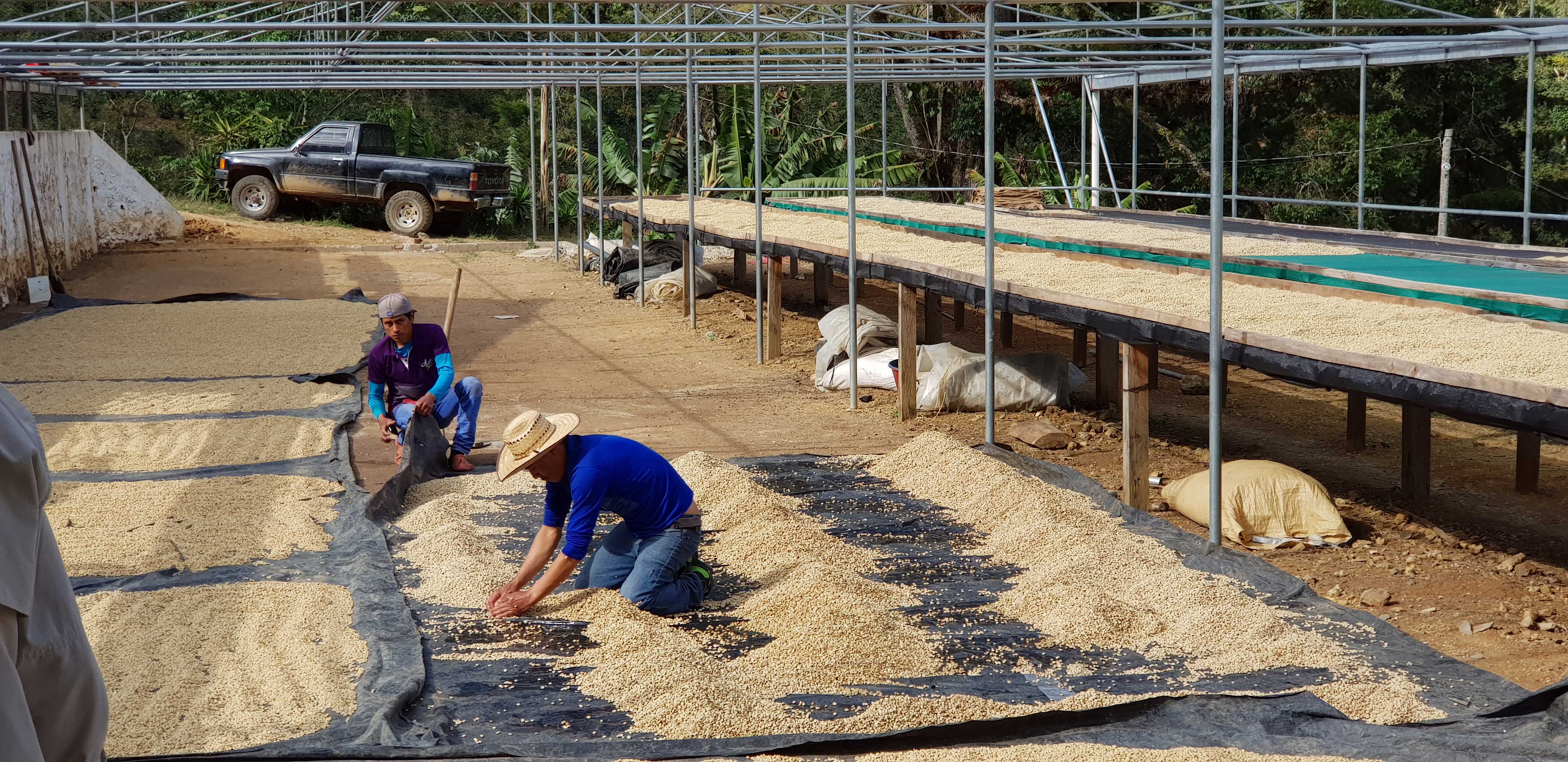Coffee Hunter Collaboration in Central America: the 2018 Guatemala/El Salvador Buying Trip
Guatemala & El Salvador Buying Trip – March 2018
Grant Rattray Reports
There are many good reasons to get together at the start of the new crops from Guatemala and El Salvador. Guatemala is one of the acknowledged powerhouses of specialty coffee production and the diversity of microclimates, production models, varietals and processes has kept Guatemala at the top of our list of ‘must buy’ origins for many years. Neighbouring El Salvador has been producing highly consistent and very well-sorted coffees – most notably Red Bourbon – which have become favourites with many specialty roasters in blends and single origins.
It’s also a chance to bring together the main Mercanta offices from the UK, USA and Singapore to cup together and decide on the very best new crop coffees for shipment to our warehouses on both the east and west coasts of the USA, the UK, Hamburg, Singapore for distribution to specialty coffee roasters globally. Most people can agree on a great coffee but there are regional preferences among roasters and their customers that make selecting the right coffees a critical part of the work we do at Mercanta.
We’d set ourselves up with a lot of ground to cover – both in the highlands of Guatemala and at the cupping table. Based out of our office in Guatemala City, we set out for several farms with which we’ve been working for many seasons to further develop existing relationships with our producer partners and to visit some for the first time.
In the mountainous Heuheutenango region to the north and close to the border with Mexico, the harvest is only now (late March/early April) at its peak. This is several weeks later than usual due to heavy rains in January. The samples we cupped from the first pass of picking (mid-February) were still noticeably grassy and will need another few weeks’ rest. We’re confident that the top farms will again produce the quality we’ve come to know and love and we’ll be cupping repeat samples from some in March/April before approving. Certainly the plants are looking great and full of fruit and we know there’s even better to come from later peak of harvest pickings.
 Finca La Maravilla looks across the valley to other Cup of Excellence winning farms including the famous El Injerto. Owner Mauricio Rosales has a Zen-like calm and follows a careful philosophy of steady and continual improvement at La Maravilla. This attitude embraces every aspect of cultivation and production. The farm is planted mostly under Caturra and Bourbon and is made up of 5 or 6 distinct plots of around 7 to 8 hectares each – El Aguacate, El Mezcal, La Peña, Los Arroyos and the highest part of the farm known as La Cumbre are planted with San Ramon varietal which is able to resist the winds and cooler temperatures. In the field, evenly-spaced shade cover is provided by the widely used Grevillea as well as 8 large wild avocado trees which produce around 4,000 fruits annually plus 2 enormous Mezcal trees which denominate one of the farms plots. Two lots have been selected from other plots for entry into the year’s Cup of Excellence.
Finca La Maravilla looks across the valley to other Cup of Excellence winning farms including the famous El Injerto. Owner Mauricio Rosales has a Zen-like calm and follows a careful philosophy of steady and continual improvement at La Maravilla. This attitude embraces every aspect of cultivation and production. The farm is planted mostly under Caturra and Bourbon and is made up of 5 or 6 distinct plots of around 7 to 8 hectares each – El Aguacate, El Mezcal, La Peña, Los Arroyos and the highest part of the farm known as La Cumbre are planted with San Ramon varietal which is able to resist the winds and cooler temperatures. In the field, evenly-spaced shade cover is provided by the widely used Grevillea as well as 8 large wild avocado trees which produce around 4,000 fruits annually plus 2 enormous Mezcal trees which denominate one of the farms plots. Two lots have been selected from other plots for entry into the year’s Cup of Excellence.
Mauricio has big plans to make improvements on his farm and to encourage others in the region to also improve their production. On his own patios, Mauricio is constructing a tinted plastic canopy to protect the coffee from the abrupt change in temperature as it moves from the cool washing tanks to the hot patio. This will provide gentler drying from the end of this season onwards. Furthermore, starting this year, Mauricio is extending his many years of knowledge to 30 or so neighbouring small farms to help them improve quality and increase value for owners and workers. With no mains electricity supply, all these farms rely on generators, so any plans to extend operations is a huge undertaking. Nonetheless, Mauricio is committed to making it work.

A little further east, near the community of San Pedro Necta, Finca La Providencia is a model of efficiency and organisation. The patios were covered in freshly washed parchment pre-drying before being finished gently in wood-fired, temperature controlled Guardiola driers. The surrounding farm rises from around 1,550m at the patios to reach 1,900 at the crest of the hill, and pickers have to
navigate a steep incline to bring the freshly picked cherries down to the wet mill for processing. This is farming on a larger scale than many others in the region but the individual Caturra, Bourbon, Mundo Novo and Catuaí varietals are still picked and processed separately.
We also visited Finca Joya Grande, whose current owner, Austreberto Morel Hidalgo Argueta, is the third generation to farm this privileged land. While he works to preserve the legacy of his Grandfather, the first man tofarm coffee here, he has added his own improvements, as well. It is telling of the region’s remoteness that the road that leads to the farm was built by Austreberto himself in 1984. Prior to that, all coffee had to be transported in and out of the farm on horseback by narrow paths.
In Cobán department, with gentler less punishing topography, the harvest is also well underway, and quality here is also looking excellent. The devastation caused by leaf rust or ‘roya’ a few years ago seems to be under control and the yield at most farms is increasing again as the plants regain their capacity to produce healthy ripe cherries. In recent years, the increase in temperatures globally has created an environment for the growth of leaf rust at higher elevations and this has now made many higher altitude specialty farms susceptible as the fungus can develop in temperatures of around 18-24 degrees.
 Finca Santa Isabel in Coban has been a favourite at Mercanta for several years. Father and son producers, Luis Valdés Sr and Jr, run an immaculate operation at Santa Isabel and neighbouring Finca San Lorenzo. This year, a newly installed mechanical siphon at the Santa Isabel wet mill is carting out the initial cherry selection to separate out floaters. A de-mucilager has also been added to improve the efficiency of the washing before gentle pre-drying on the patio and finishing off in the Guardiola. So far the quality this year from both farms is stunning, and we should be offering lots from all our locations.
Finca Santa Isabel in Coban has been a favourite at Mercanta for several years. Father and son producers, Luis Valdés Sr and Jr, run an immaculate operation at Santa Isabel and neighbouring Finca San Lorenzo. This year, a newly installed mechanical siphon at the Santa Isabel wet mill is carting out the initial cherry selection to separate out floaters. A de-mucilager has also been added to improve the efficiency of the washing before gentle pre-drying on the patio and finishing off in the Guardiola. So far the quality this year from both farms is stunning, and we should be offering lots from all our locations.
At Finca El Tambor – another Cup of Excellence winning farm located in Palencia (just outside Guatemala city) – owner Victor Calderón has come up with a novel way to combat leaf rust using a solution of local benzonite clay (the by-product of some small-scale mining on part of the farm) mixed with water. This appears to be effective in preventing the appearance and spread of leaf rust. At El Tambor, the use of any agrochemical inputs is kept to an absolute minimum and fertilizer is used only in the nursery and for the first year in the field.

In Antigua, just before arriving in the former and ancient capita of the same name, lies the renowned Finca Santa Clara and Finca La Soledad which are spectacular in every way. Carefully tended and laid out coffee trees surround the farm house and mill and cover the gentle slopes that rise to the highest elevations of the farm at 1,830 masl. Santa Clara has a loyal following among many leading specialty roasters and La Soledad produces a very clean and consistent coffee that finds use in premium blends.
Back in Guatemala City, we had a huge selection of new crop samples to cup from Guatemala and El Salvador. On the whole, the samples from El Salvador were better rested and ideal for cupping. Quality overall has been extremely high and the coffees exhibited the consistency, balance and clean cup that buyers have come to love from El Salvador. John Curry from our Seattle office had been brought in specifically to roast and bring out the best in around 200 samples that we’d cup over the next 4 days. Even this early in the season, the coffees were a wealth of riches with El Salvador providing a host of clean sweet Red Bourbons and rich Kenya-like Pacamaras while Guatemala impressed with some fabulous estate coffees and great value lots form larger farms.
We’re still receiving samples from both Guatemala and El Salvador and we have many lots still to approve. The first shipment will be departing for our warehouses in May for arriving in June and throughout July and August. Arrival samples will be available as soon as each container unloads. Until then, please get in touch with us if you’re interested in new crop coffees from these leading Central American origins.






















